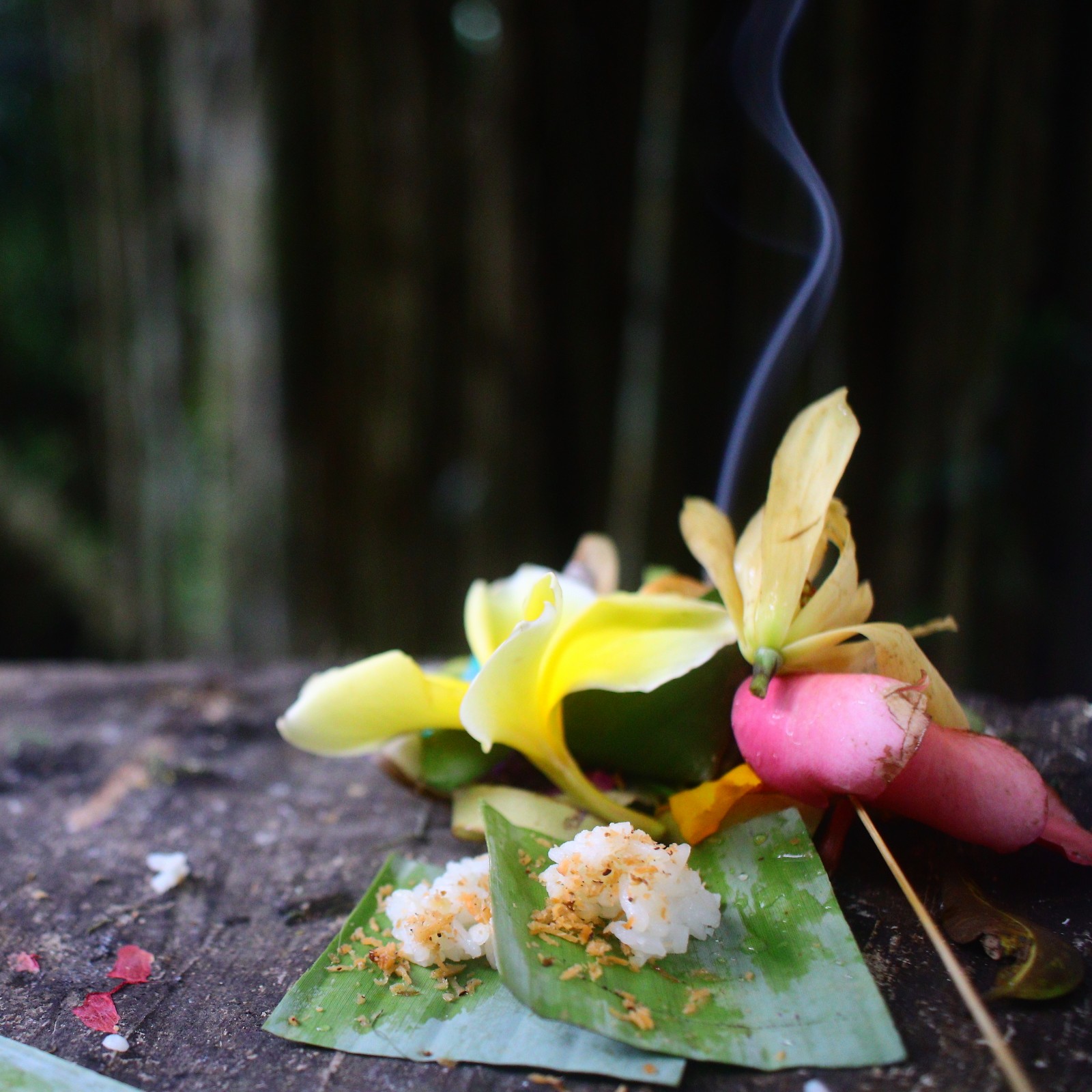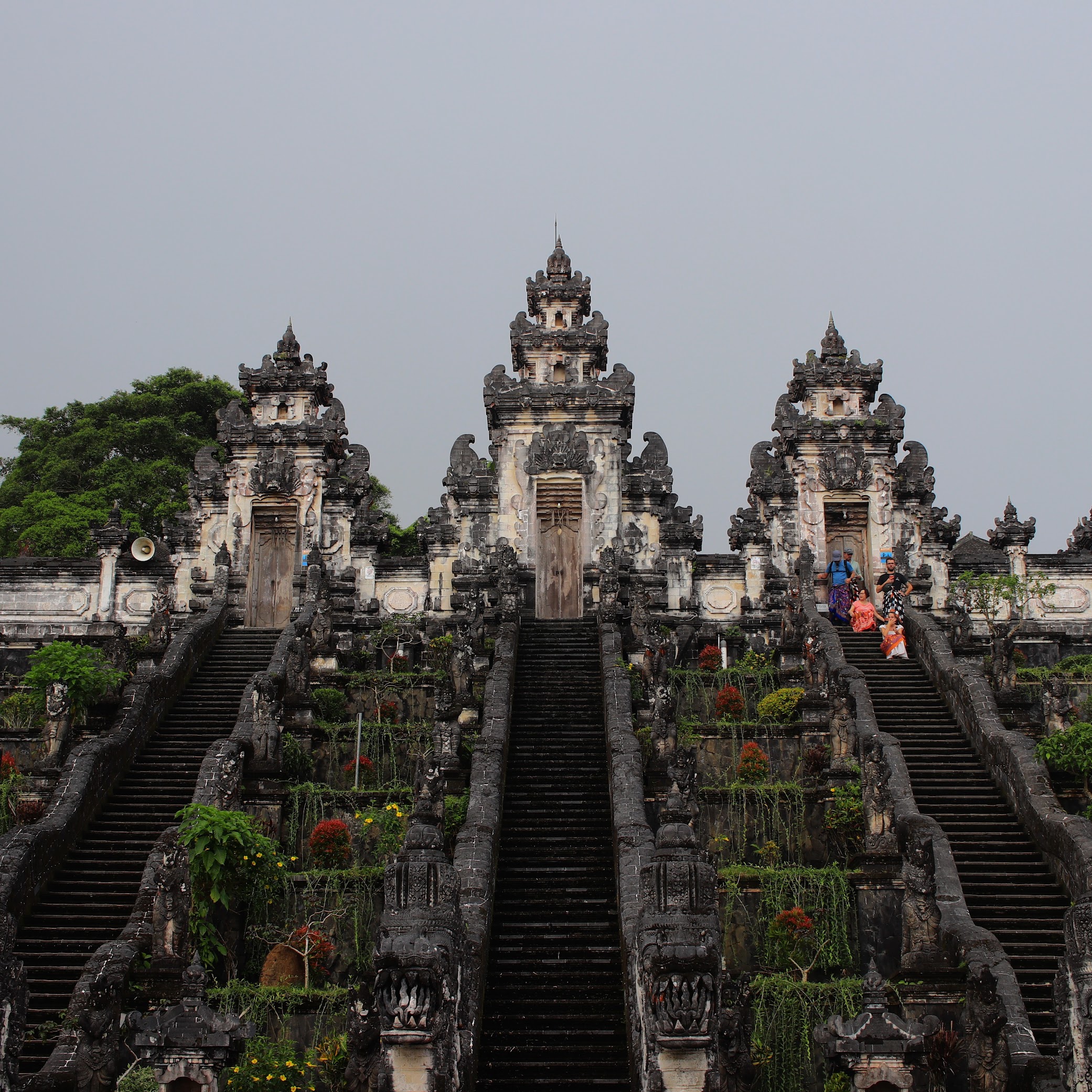
For reasons unknown to me, Bali feels simultaneously familiar and foreign. As I meander through the roads circumscribing the Ubud Palace and the sprawling central market area, everything and everyone I see is both alien and familiar. It has been a good five days since I checked into this wonderful little place in central Ubud — smack in the middle of a street so narrow that it would barely fit two bikes plying across and yet, every now and then, a car would snake its way through and deposit a couple of tourists like me — but my brain refuses to register that I am thousands of miles away, on a foreign parcel of an island, surrounded by tourists and hosts that speak a million different tongues.
Unlike the strong, heady Siamese scents, Balinese-Indonesian aromas, at least in Ubud, are soft, welcoming and quite appetising. I've walked the sidewalks a plethora of times now. Not once have I not salivated as a dozen different aromas from whatever umamic spices are being concocted in the scores of restaurant kitchens dotting central Ubud reach my olfactory apparatus.
As if to accentuate and complement the food aromas, thousands of incenses from the canang sari — a beautiful little leaf-tray of daily offerings — serve up wafts of inexplicably-pleasant-smelling smoke. It has rained overnight, fading out with mild drizzles in the early hours, so the midday walk for lunch under cloudy-skies with these different aromas "hits different".
The canang sari itself is a dichotomous mix of ritualistic tradition and macroeconomic commerce. Materially, it's a small square tray made out of banana leaf (or coconut leaf), filled with flowers of different colours and then some more items: a small morsel of rice, a toffee, a cookie, a couple of incense sticks, etc. Women clad in traditional Balinese-Hindu attire would carry dozens of these and go around placing them.
Everywhere you go, there are dozens of these placed because everything is divine. On paper, in rituals and perhaps in places not as smitten with the dictates of free market tourism, the Tri Hita Karana1 persists and so the canang is found aplenty at the entrances to shops, houses and temples, on idols across the landscape, on tables and cash registers, in pots holding plants sacred and otherwise, on trees and tree branches, and I spotted one tucked neatly in the gap between the registration plate and the body of a speeding Yamaha bike.
Accompanying each of these were the incense sticks — sometimes two for each. Collectively, these acted like a centralised room-scent except the room was the size of a big town. What Changi Airport in Singapore achieved through ingenious use of technology and architecture, the Balinese accomplished through casually- and abundantly-placed agarbattis.
At different times, I try (and fail because, well, distractions) to mentally calculate the economic value of the production, distribution and consumption of the hundreds of thousands (if not millions) of canang saris across Bali. It must be a humongous number.
Walking down Jalan Dewisita2, I spotted a couple of canang saris that had what looked like a cigarette. Could that actually be a cigarette in the daily offering? A Brahmin upbringing has its effects: one forgets that what is taboo in an offering is very subjective. Few paces down and suddenly, in true Baader-Meinhof fashion, I started spotting cigarette-laden canang saris all over the place.
So, yeah, cigarettes as part of the daily offering is a thing. Because the daily offering is for the divine and humans who had passed away essentially pass away into the divine and if some of those humans were fond of a puff or two during their lifetimes, the daily offerings had a personalised touch in the form of the very tobacco they'd have fondly smoked.
It was only much later that I remembered entire cultures in my very own home-ground (read, South India/Tamil Nadu) where offerings of local and international liquor are common to certain deities.

The courtesy of the hosts is unbelievable. Every shopkeeper, server, cook, helper, guide, everyone really, is exceptionally courteous. I keep wondering if it's all a charade that they put up in evolutionary response to the intense tourist industry flourishing in Bali, or if the people are just truly, naturally like this.
Finding graciousness and courtesy in rural quarters is not uncommon across the world. But the same cannot be said of urban and semi-urban spaces, especially the ones with all temperamental-kinds of tourists. Yet, here I am, waited in earnest, served with kindness, and looked after with benevolence. Maybe some of it is learned, practiced, perfected charade. And maybe a lot of it is just innate, and springs forth naturally.

A big part of Bali is the ancestral house that is not just living quarters but also houses the family temple within the complex. The distinct style of architecture here has a very earthly charm to it. These complexes are adorned with a million little trinkets and flush with greenery, often with the trademark Bali-style entrance structure but with a really small door for the entrance. I remember thinking, constantly, how do they carry large furniture in? only to find that most houses had another, larger entrance carved to the side of the small, main entrance. Of course.
The family temple, I later learn over coffee with a local, is out of bounds for non-family. Many rites and ceremonies happen here and as the elderly leave their mortal lives, they are added to the pantheon of the divine housed in the family temple, followed by more rites and ceremonies propitiating them.
In this, and in many other things like names and myths, Balinese Hinduism strikes a familiar tone. And yet, the religion in practice and the many nuances of the culture appear very alien. It is Hinduism from a parallel universe. Sometimes, it felt like everyday religion was more private than it is in India. Yet, Bali is overrun by temples and temple-related entities. Familiar patriarchal tropes exist here — people tell you (especially if you're a woman) to dress appropriately and to not enter the temple premise if you are menstruating while hypocritically chain-smoking a pack within that same temple premise. Tradition, religion, architecture, capitalism, arbitrary abandoning of rules to accommodate tourist dollars, equally arbitrary enforcement of other rules to appease local sentiments, everything melts into one giant, island-sized pot of economic gold.
Both Ubud in Central Bali and Canggu in South Bali are crowded. As someone who abhors crowds, I found it particularly amusing that it has taken me three decades to realise that there are gradations of "crowd" and that I might just like one kind and detest the other.
In fact, I'd say Ubud was much more crowded, given how dense the place was — narrow streets, narrow sidewalks, lots of eateries densely smothered against each other (to a point where sometimes I had to pause to figure out where one restaurant ended and where the next one began). But it retained a charm and a polite hum that I felt at ease amidst all that hustle and bustle.
Canggu was less crowded; at best, it was the beaches that were crowded. Yet, an inexplicable uneasiness swept over me here. I have pondered over why this was so to no avail. But on the last day, I traveled to Tanah Lot, a half-hour ride from Canggu. The ride through rural landscapes, the hours spent aimlessly in the sprawling sea-side temple campus in Tanah Lot and, most importantly, the cheaper shopping and food here cured me of my Canggu-ailment.

1 Tri Hita Karana is a Balinese concept of the three pillars of life: harmony between humans, humans and the environment, and humans and the divine.
2 Jalan Dewisita is street in central Ubud.

